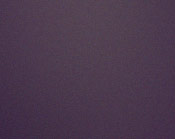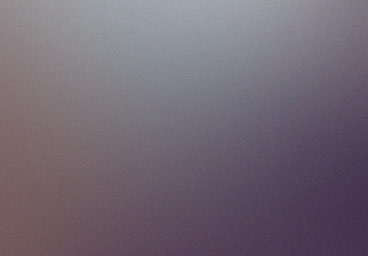Composing New Urban Futures with AI
Jamie Littlefield
References
Anderson, S. S. (2023). Places to stand: Multiple metaphors for framing ChatGPT's corpus. Computers and Composition , 68, 102778. doi:10.1016/j.compcom.2023.102778
Bender, E. M., Gebru, T., McMillan-Major, A., & Shmitchell, S. (2021). On the dangers of stochastic parrots: Can language models be too big? 🦜. Proceedings of the 2021 AC Conference on Fairness, Accountability, and Transparency 610–623. doi:10.1145/3442188.3445922
Boyle, C. & Rivers, N.A. (2018). Augmented publics. In Gries, L. E., & Brooke, C. G. (Eds.). (2018).Circulation, writing, and rhetoric. Utah State University Press. doi:10.2307/j.ctt21668mb
Byrd, A. (2023). Truth-telling: Critical inquiries on LLMs and the corpus texts that train them. Composition Studies , 51(1), 135–142.
Crider, J., Greene, J., & Morey, S. (2020). Digital daimons: Algorithmic rhetorics of augmented reality. Computers and Composition, 57, 102579. doi:10.1016/j.compcom.2020.102579
Deleuze, G., & Guattari, F. (2013). A thousand plateaus. Bloomsbury Academic.
Dewey J. (1927). The public and its problems. H. Holt and Company.
Dunne, A., & Raby, F. (2013). Speculative everything: Design, fiction, and social dreaming. MIT Press.
Edbauer, J. (2005). Unframing models of public distribution: From rhetorical situation to rhetorical ecologies. Rhetoric Society Quarterly, 35(4), 5–24. doi:10.1080/02773940509391320
Faris, M. J., & Holmes, S. (Eds.). (2022). Reprogrammable rhetoric: Critical making theories and methods in rhetoric and composition. University Press of Colorado.
Galloway, A., & Caudwell, C. (2018). Speculative design as research method. In G. Coombs, A. McNamara, & G. Sade (Eds.), Undesign, 1st ed., 85–96. Routledge. doi:10.4324/9781315526379-8
Getchell, K. M., Carradini, S., Cardon, P. W., Fleischmann, C., Ma, H., Aritz, J., & Stapp, J. (2022). Artificial intelligence in business communication: The changing landscape of research and teaching. Business and Professional Communication Quarterly, 85(1), 7–33. doi:doi.org/10.1177/23294906221074311
Greene, J. (2023). Composing place: Digital rhetorics for a mobile world. Utah State University Press.
Gries, L., Watson, B., Kalin, J. P., Pratt, J., & Dighton, D. (2020). (Re)designing Innovation Alley: Fostering civic living and learning through visual rhetoric and urban design. Review of Communication, 20(2), 170–177. doi:10.1080/15358593.2020.1737190
Gries, L. E. (2019). Writing to assemble publics: Making writing activate, making writing matter. College Composition & Communication, 70(3), 327–355. doi:10.58680/ccc201929986
Habermas, J. (1989). The structural transformation of the public sphere: An inquiry into a category of bourgeois society. MIT Press.
Hoffman, J. (2022). Speculative futures: Design approaches to navigate change, foster resilience, and co-create the cities we need. North Atlantic Books.
Jagoda, P. (2023). Speculative design. In Jagoda, P., with Ireashia B. and Ashlyn S. Transmedia stories: Narrative methods for public health and social justice. Stanford University Press. http://transmediastories.org. doi:10.21627/2022ts
Johnson, G. P. (2023). Don't act like you forgot: Approaching another "literacy crisis" by (re) considering what we know about teaching writing with and through technologies. Composition Studies, 51(1), 169–218.
Johnson, M. A., & Johnson, N. R. (2020). The resilience of sensation in urban planning. Poroi, 15(1). doi:10.13008/2151-2957.1295
Latour B. & Weibel P. (2005). Making things public: Atmospheres of democracy. MIT Press.
Moore, K. R. (2023). Public. In Yu, Han, & Jonathan Buehl (Eds.). (2022). Keywords in technical and professional communication. (pp. 233–239). The WAC Clearinghouse; University Press of Colorado. doi:10.37514/TPC-B.2023.1923
Moore, K. R., & Elliott, T. J. (2016). From participatory design to a listening infrastructure: A case of urban planning and participation. Journal of Business and Technical Communication, 30(1), 59–84. doi:10.1177/1050651915602294
Ong, W. J., Hartley, J. (2012). Orality and literacy: The technologizing of the word. Routledge.
OpenAI (2021). DALL·E: Creating images from text. Retrieved October 5, 2023, from https://openai.com/research/dall-e
Opel, D. S., & Rhodes, J. (2018). Beyond student as user: Rhetoric, multimodality, and user-centered design. Computers and Composition, 49, 71–81. doi:10.1016/j.compcom.2018.05.008
Preston, J. (2015). Project(ing) literacy: Writing to assemble in a postcomposition FYW classroom. College Composition and Communication, 67(1), 35–63.
Rai, C. (2016). Democracy's lot: Rhetoric, publics, and the places of invention. University of Alabama Press.
Ramesh, A., Pavlov, M., Goh, G., Gray, S., Voss, C., Radford, A., Chen, M., & Sutskever, I. (2021). Zero-shot text-to-image generation (arXiv:2102.12092). http://arxiv.org/abs/2102.12092
Reed, S., Akata, Z., Yan, X., Logeswaran, L., Schiele, B., & Lee, H. (2016). Generative adversarial text to image synthesis. Proceedings of the 33rd International Conference on Machine Learning.
Rice, J. (2012). Distant publics: Development rhetoric and the subject of crisis. University of Pittsburgh Press.
Ridolfo, J. R. & DeVoss, D. N. (2009). Composing for recomposition: rhetorical velocity and delivery. Kairos: A Journal of Rhetoric, Technology, and Pedagogy, 13(2). https://kairos.technorhetoric.net/13.2/topoi/ridolfo_devoss/
Rivers, N. A., & Weber, R. P. (2011). Ecological, pedagogical, public rhetoric. College Composition and Communication, 187–218.
Snow, S., Khan, A. H., Glencross, M., & Horrocks, N. (2021). Neighbourhood wattch: Using speculative design to explore values around curtailment and consent in household energy interactions. Proceedings of the 2021 CHI Conference on Human Factors in Computing Systems, 1–12. doi:10.1145/3411764.3445095
Varnelis, K., & Friedberg, A. (2008). Place: The networking of public space. In Varnelis, K (ed.) Networked publics, 15-42. MIT Press.
Warner, M. (2002). Publics and counterpublics. Zone Books.
Wilkie, A., Savransky, M., & Rosengarten, M. (2017). Speculative research: The lure of possible futures. Taylor and Francis.





